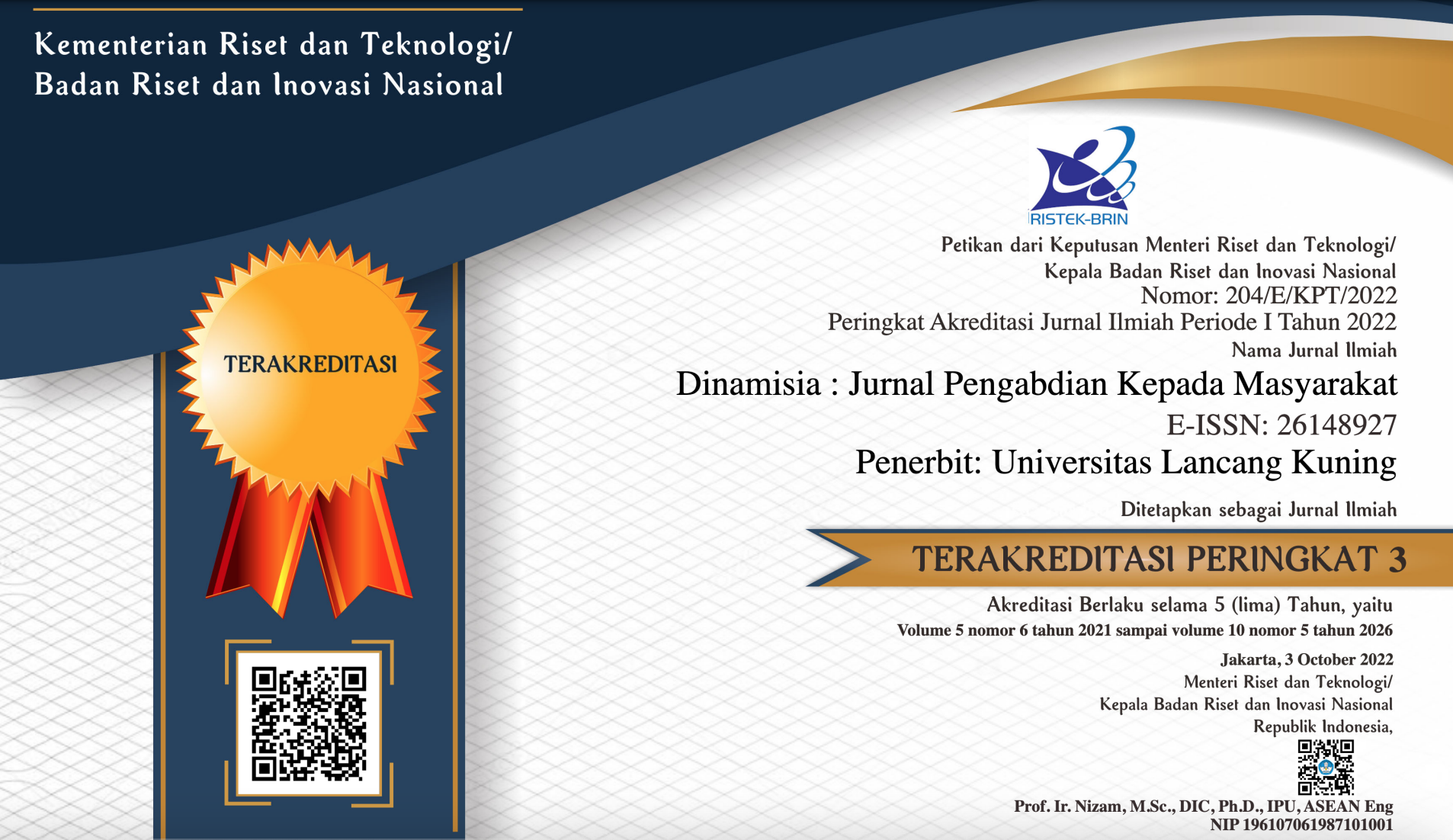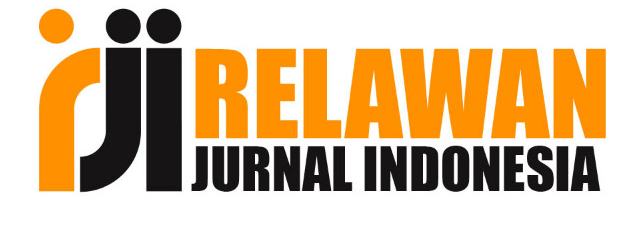Musescore Software Training for the Development of TPACK-Based Music Learning in Elementary Schools
Pelatihan Software Musescore untuk Pengembangan Pembelajaran Musik Berbasis TPACK di Sekolah Dasar
Abstract
Digital literacy and the skills of elementary school teachers in choosing and using scoring applications (musical notation) as a medium as well as a learning resource for students are essential to do. Elementary school education is experiencing several problems today, such as the government's inability to provide training on using applications for the learning process. In addition, not all teachers have the confidence in choosing and determining computer application software that can support learning in class, especially in the subject matter of Cultural Arts and Crafts (SBdP) material in the field of music. Elementary school teachers in the Laweyan sub-district of Surakarta do not yet have optimal insight regarding developing music applications to support material delivery in class. This community service activity is focused on training elementary school teachers to use music scoring (notation) software with the Musescore application. The results of this training found the formation of teacher skills using the Musescore music application to support music learning in elementary schools.
Downloads
References
Adelia, R. (2016). Pentingnya Kompetensi Guru Sebagai Upaya Mencapai Kesuksesan Dalam Proses Belajar-Mengajar. July, 1–23.
Effendy, I. (2016). Pengaruh Pemberian Pre-Test dan Post-Test Terhadap Hasil Belajar Mata Diklat HDW.DEV.100.2.a pada Siswa SMK Negeri 2 Lubuk Basung. Jurnal Ilmiah Pendidikan, 1(2), 81–88.
Handbook for MuseScore 4, from (https://musescore.org/en/handbook/4)
Hannon, E. E., & Trainor, L. J. (2007). Music acquisition: effects of enculturation and formal training on development. Review TRENDS in Cognitive Sciences, 11(11). https://doi.org/10.1016/j.tics.2007.08.008
Karsono. (2016). Gembira Bermain Musik : Penerapan Model Quantum Learning. Mimbar Sekolah Dasar, 3(2), 203–215. https://doi.org/10.17509/mimbar-sd.v3i2.4286
Khotimah, H. (2016). Studi Komparasi Kompetensi Profesional Guru Matematika Smp Negeri di Balikpapan Ditinjau Berdasarkan Golongan Kepangkatan. 2(1), 54–62.
Lestari, S. (2015). Faktor-Faktor Yang Mempengaruhi Pemanfaatan Tik Oleh Guru. Jurnal Kwangsan, 3(2), 121. https://doi.org/10.31800/jurnalkwangsan.v3i2.29
Ling Koh, J. H., Chai, C. S., & Tay, L. Y. (2014). TPACK-in-Action: Unpacking the contextual influences of teachers’ construction of technological pedagogical content knowledge (TPACK). Computers and Education, 78, 20–29. https://doi.org/10.1016/j.compedu.2014.04.022
Mishra, P., & Warr, M. (2021). Contextualizing TPACK within systems and cultures of practice. Computers in Human Behavior, 117(November 2020), 106673. https://doi.org/10.1016/j.chb.2020.106673
Morrison, S. J., & Demorest, S. M. (2009). Cultural constraints on music perception and cognition. In Progress in Brain Research (Vol. 178, Issue C). Elsevier. https://doi.org/10.1016/S0079-6123(09)17805-6
Mukharomah, E. (2021). Pelatihan Cara Mudah Dan Cepat Melakukan Evaluasi Dengan Pemanfaatan Google Form. Jurnal Pengabdian Masyarakat Ilmu Keguruan Dan …, 4(1). http://www.trilogi.ac.id/journal/ks/index.php/jpmikp/article/view/875
Rindawati, R., Khosyi’Atunnisa, S., & Herlambang, R. (2021). Pemanfaatan TIK dalam Pengembangan Sumber Dan Media Pembelajaran Di Era Society 5.1. Jurnal FATEKSA: Jurnal Teknologi Dan Rekayasa, 6(2), 24–31. https://uswim.e-journal.id/fateksa/article/view/263
Sahelatua, L. V. dan M. (2018). Kendala guru memanfaatkan media It dalam pembelajaran di Sdn 1 Pagar Air Aceh Besar. Ilmiah Pendidikan Guru Sekolah Dasar, 3(2), 131–140. http://www.jim.unsyiah.ac.id/pgsd/article/download/8579/3601
Siahaan, S. (2015). Pemanfaatan Teknologi Informasi Dan Komunikasi Dalam Pembelajaran: Peluang, Tantangan, Dan Harapan. Jurnal Teknodik, 321–332. https://doi.org/10.32550/teknodik.v19i3.173
Sri, J. (2011). Kreativitas Dan Kompetensi Guru Sekolah Dasar. Jurnal Pendidikan Dan Kebudayaan, 17(1).
Sutirna, S., Suntoko, S., Nurasiah, Y., Mukhtar, U., & Effendi, B. Z. (2023). A Guidance and Counseling on Learning Media Innovations For Middle School Teachers at the Telukjambe Karawang Commissariat. Dinamisia : Jurnal Pengabdian Kepada Masyarakat, 7(1), 62–67. https://doi.org/10.31849/dinamisia.v7i1.12269
Wati, T. N., & Nafiah. (2020). Peningkatan Hasil Belajar Melalui Pendekatan Tpack Pada Siswa Kelas V Upt Sd Negeri Jambepawon 02 Blitar. National Conference for Ummah (Ncu), 1(1), 1–16.
Yasri, D., Arya, E. H., & Mais, H. (2023). Assistance in Making Interactive Learning Using Online Media for Teachers of SDN 24 Pinggir Pendampingan Pembuatan Pembelajaran Interaktif Dengan Pemanfaatan Media Online Bagi Guru SDN 24 Pinggir. 7(1), 27–34.


















